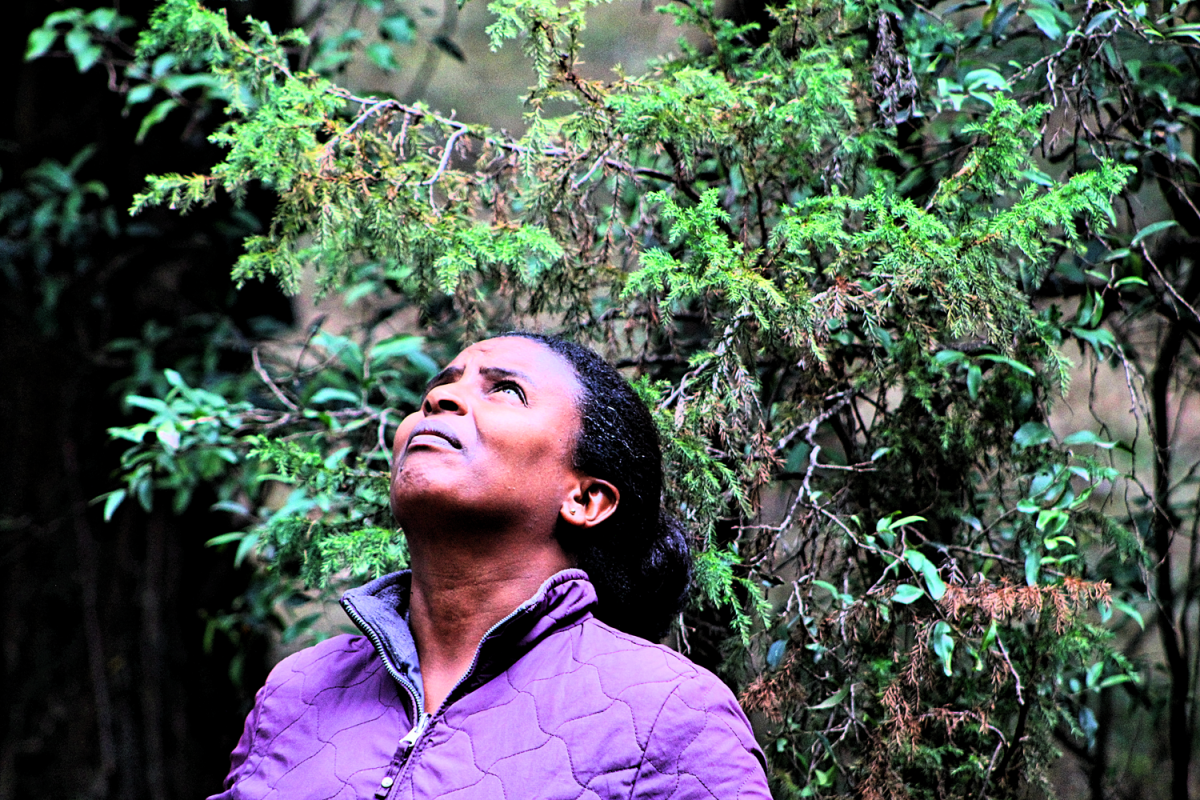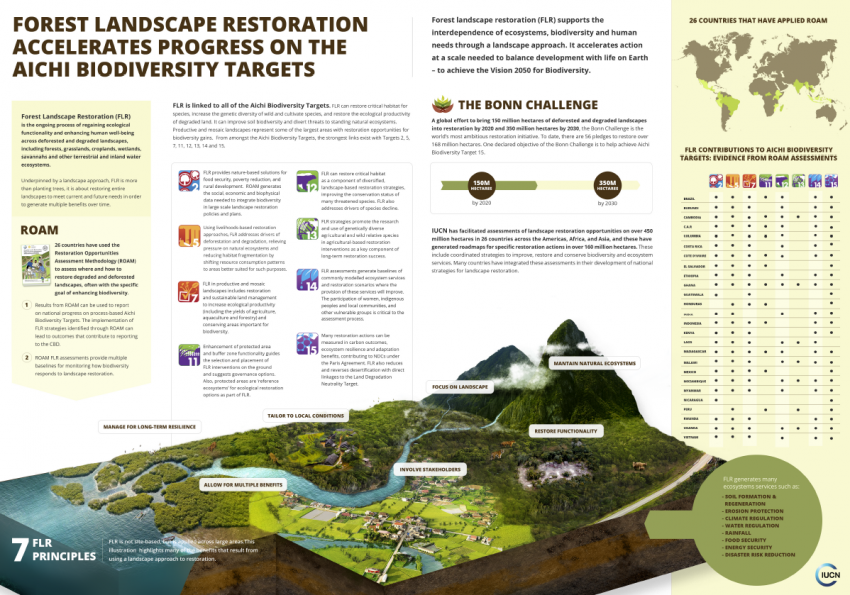High hopes for biodiversity through landscape restoration
Biodiversity conservation is the goal of the countries meeting over the next few weeks at the 14th Conference of the Parties of the Convention on Biological Diversity. A new working paper outlines a hopeful vision and practical applications for achieving biodiversity conservation and the Aichi Biodiversity Targets through forest landscape restoration.

Photo: IUCN / Craig Beatty
At first glance, nature documentaries often depict the best of biodiversity – demonstrating the beauty and ubiquity of nature while glazing over the harsh realities of an era in a biodiversity crisis. Of course, communication on the state of nature through film and television goes a long way in moulding public perception. An inconvenient truth, however, is that the condition of species and ecosystems needs more attention, and most threats to the existence of life as we know it are as dire as ever.
Regardless of public perception on the state of biodiversity, global efforts to address the causes of species and ecosystem decline while simultaneously working for a sustainable future through conservation, continue to evolve. The soon-to-be-launched Global Assessment of Biodiversity and Ecosystem Services, which will be the most comprehensive report on biodiversity loss to date, outlines evidence for the causes of decline and plausible future scenarios for biodiversity. Drawn from recent work by the Intergovernmental Panel on Biodiversity and Ecosystem Services (IPBES), this assessment features pathways and policy options to accelerate action on biodiversity in the coming years.
This assessment is also the result of the implementation of frameworks set up to help countries make decisions to address biodiversity issues. Along with actions and tools like the Strategic Plan for Biodiversity 2011-2020 and the Aichi Biodiversity Targets, and the conservation status of nearly 100,000 species on the IUCN Red List of Threatened Species, the Red List of Threatened Ecosystems, and the Green List of Protected Areas, the world now has a relatively clear baseline of the issues surrounding biodiversity and the actions that are required to safeguard it. Within these frameworks, governments can plan, strategize and implement actions to conserve and restore biological diversity.
Even so…
It has not been enough. Pro-biodiversity actions to date have yet to result in the positive global biodiversity trends imagined when these ambitious targets were set. The scale of the issues, and multiplicity of stakeholders and interests have proven ungainly, and often compete with other global priorities. Natural habitat loss and degradation still negatively impact the livelihoods of billions of people and threaten the survival of countless species across all regions of the world.
As countries prepare to meet at the 14th Conference of the Parties of the Convention of Biological Diversity to decide how to accelerate progress on the Aichi Biodiversity Targets, and start defining what the post 2020 biodiversity framework to achieve the 2050 Vision for Biodiversity will look like, another global initiative is already showing strong momentum and enthusiasm at a scale previously unseen in biodiversity conservation and ecosystem restoration – The Bonn Challenge.
A movement to encourage biodiversity
Focusing on the potential of forest landscape restoration as a nature-based solution to both protect and restore the components of biodiversity, members to the Bonn Challenge recognise how ecological productivity and human well-being are inseparable. With 56 commitments to forest landscape restoration under the Bonn Challenge worldwide, totalling 169 million hectares, FLR is at the centre of global efforts to address challenges to both people and nature including: ecosystem degradation, land conversion and fragmentation, desertification, poverty, migration, inequity and climate change.
The potential of FLR through Bonn Challenge commitments to both protect and restore the components of biodiversity at large scales is unmatched.
Landscape restoration can restore and return functionality to critical habitat, reintroduce extirpated species and increase genetic diversity. This happens not just in degraded forest habitats but across landscapes of many different interacting ecosystems; forest landscape restoration is not only for forests. For instance, it has enormous potential to transform hundreds of millions of hectares of croplands and mosaic landscapes to broadly improve their ecological productivity by supporting increases in the components of biodiversity.
In order to support implementation of forest landscape restoration, IUCN facilitated national and subnational assessments using the Restoration Opportunities Assessment Methodology (ROAM) on over 450 million hectares in dozens of countries across the Americas, Africa, and Asia. The process not only identified concrete restoration actions that could be implemented on over 160 million hectares, but also quantified the associated benefits through mapping degradation and restoration priority, completing cost-benefit analyses, and generating gender-responsive approaches to restoration. There is robust evidence for FLR to scale up and deliver transformational change that will both increase the ecological productivity of degraded and deforested areas and provide livelihood support for people.
Meeting targets through restoration
In short, FLR assessments using ROAM have already equipped these countries to report progress under their national biodiversity targets as both a direct and indirect result of the assessment, planning, and implementation of FLR. As both a process and as an activity on the ground, it’s clear that FLR strongly contributes to Aichi Biodiversity Targets 2, 5, 7, 11, 12, 13, 14, and 15.
 Photo: IUCN
Photo: IUCN
Read how FLR contributes to biodiversity targets: ACCELERATING BIODIVERSITY COMMITMENTS THROUGH FOREST LANDSCAPE RESTORATION- Evidence from assessments in 26 countries using the Restoration Opportunities Assessment Methodology (ROAM) – working paper
—Written by Adriana Vidal, Craig Beatty and Corbett Nash



